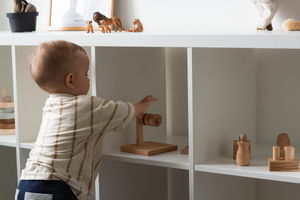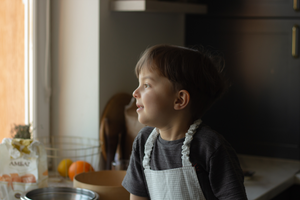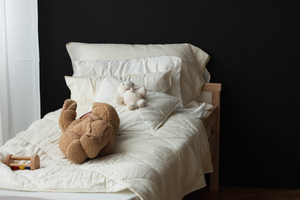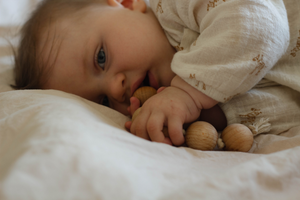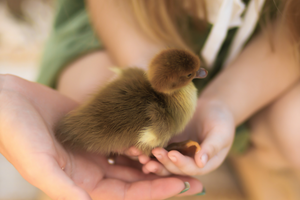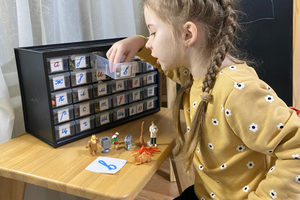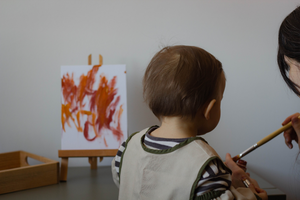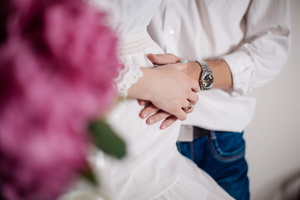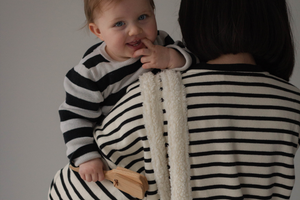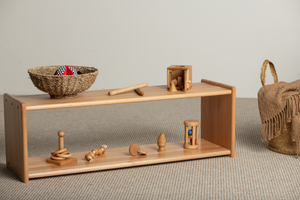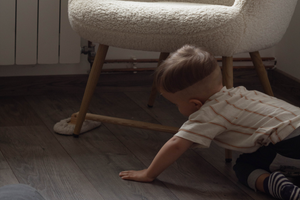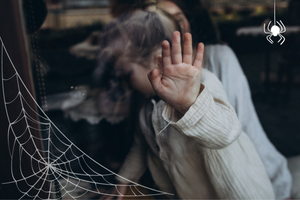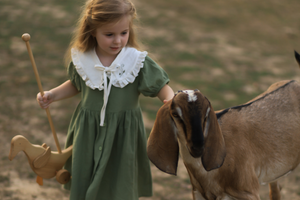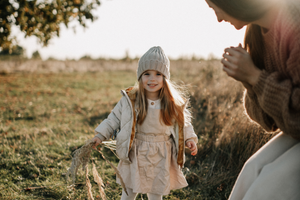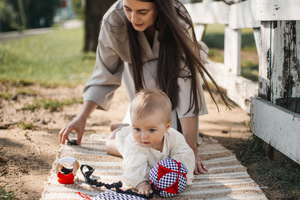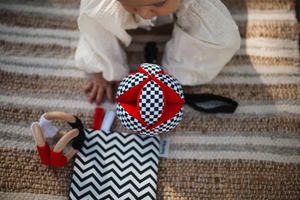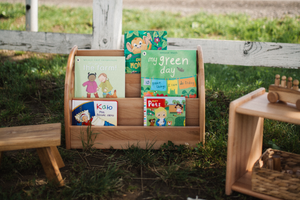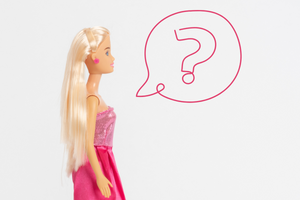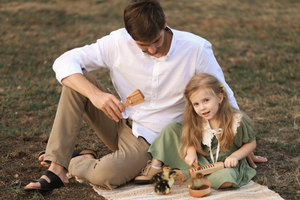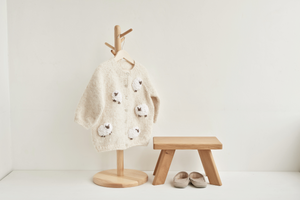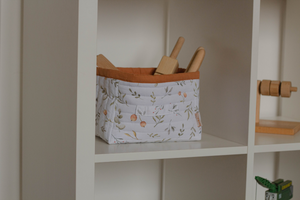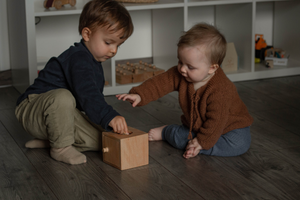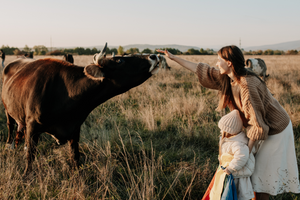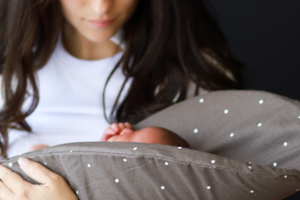In a Montessori classroom, children learn to fold clothing using special training cloths with guideline lines applied to the fabric.
A child learns to fold correctly by folding a piece of fabric along the line and following it precisely.
.png)
Folding cloths is an excellent practical activity in the Montessori method that promotes independence, confidence, and the development of fine motor skills.
It also enhances children's muscle control and teaches precision and attention to detail, laying the foundation for future work with geometry.
.png)
Why should a child learn to fold their own clothes?
- It helps them participate in daily household tasks.
- The activity fosters independence by teaching them to fold clothing and other items.
- It develops finger muscle control and teaches precision.
- This exercise prepares the child for geometry through an understanding of folding lines.
.png)
Presentation of the Material
This exercise consists of four parts.
Part 1: Folding fabric with a single middle line
Invite the child to the table and explain that today you will teach them how to fold clothing. Ask, "Do you see this line in the middle of the fabric?" Now place your index finger of the right hand on the lower right corner, and the thumb of the right hand under the fabric, so that it is under the index finger of the right hand. Squeeze both fingers and lift slightly. Place the index finger of the left hand next to the index finger of the right hand, and the thumb of the left hand next to the thumb of the right hand. Gently press both fingers of the left hand together and slide them along the bottom edge of the fabric to the lower left corner. Bring the squeezed corners to the upper corners of the fabric and fold the fabric in half. Ask the child to try.
Part 2: Folding fabric with a double middle line
This part is a continuation of the first part.
Show the child two lines (one vertical and one horizontal) marked on the fabric. Ask the child to fold the fabric as we did before. If the child has folded the first part, tell them that we will repeat steps 4 to 9 from the first part to fold the cloth completely. Raise the index finger of the right hand, and then raise the thumb of the right hand and place them on what is now in the lower left corner. Place two fingers of the right hand next to two fingers of the left hand and slide to the right along the bottom edge to the right corner. Ask the child to try. Once the child successfully folds and unfolds the fabric, instruct them to place it in the upper left corner of their table next to other clothing.
.png)
Part 3: Folding fabric diagonally
This part is a variation of the first part, where we fold the fabric diagonally.
Invite the child to the table and tell them that today we will be folding this fabric diagonally. Ask the child, "Do you see the line that connects the upper left corner and the lower right corner? We will be folding this fabric diagonally." Now grasp the lower left corner and lift it closer to the upper right corner. Ensure the corners are as close to each other as possible. Press firmly on the fabric along the diagonal to prevent it from unfolding. Tell the child that this is the way to fold the fabric. Invite the child to try.
Part 4: Folding fabric with a double diagonal line
This part is a continuation of part 3.
-
Show the child two diagonal lines that intersect at the center and are marked on the fabric.
-
Ask the child to fold the fabric diagonally, as we did in part 3.
-
When the child makes the first fold, tell them that we will repeat steps 4 to 6 from part 3 to make the second fold.
-
Raise the index finger of the right hand and press down on the lower right corner.
-
Move the fabric upward, following the line, and connect it to the upper left corner.
-
Press firmly on the fabric along the diagonal to prevent it from unfolding on its own.
-
Invite the child to try.
After the child successfully folds and unfolds the fabric, instruct them to place it in the upper left corner of their table next to other clothing.






